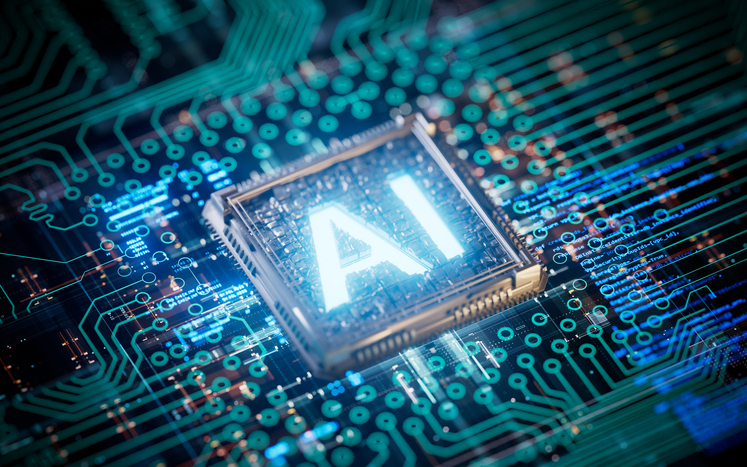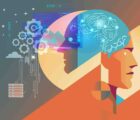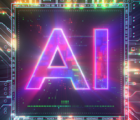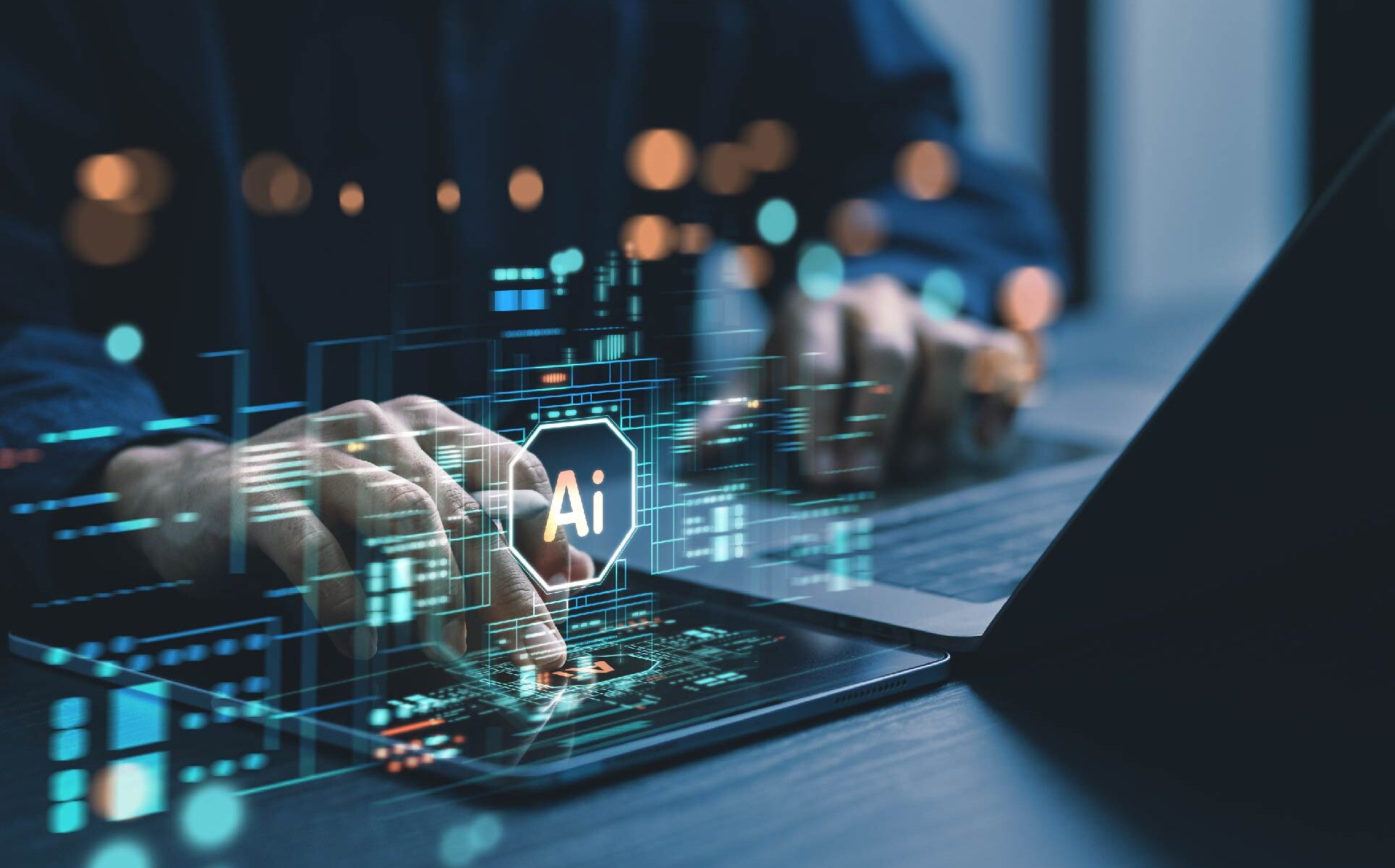
One of the hottest topics in the news and public discourse today, artificial intelligence (AI) is reshaping the insurance industry by automating processes, enhancing customer experiences and optimizing risk management. In response, the 2024 CAS Annual Meeting spotlighted AI in the closing general session, entitled “Revolutionizing Insurance: Harnessing AI Across the Value Chain.”
To capture a breadth of perspectives, the session featured three panelists with diverse experiences inside and outside of insurance. Panelists included Jim Guszcza, principal of Clear Risk Analytics; Paul Bessire, chief technology officer of Coterie Insurance; and Karthik Ramakrishnan, founder and CEO of Armilla AI. Isaac Espinoza, CEO of Kettle, served as moderator.
Guszcza opened the session by exploring the parallels between the revolutionary impacts of electricity and AI, distilling a similar sentiment expressed by the computer scientist and technology entrepreneur Andrew Ng who coined the phrase, “AI is the new electricity.” Ng also said:
Just as electricity transformed almost everything 100 years ago, today I actually have a hard time thinking of an industry that I don’t think AI will transform in the next several years.
AI for insurance
Initial applications of any new general-use technology tend to be point solutions within larger systems designed for an earlier era, but over time the new technology allows for comprehensive system redesign. Per economist and journalist Tim Harford in his radio show and podcast 50 Things That Made the Modern Economy, “Steam-powered factories had to be arranged on the logic of the driveshaft. Electricity meant you could organize factories on the logic of a production line.”
According to Bessire, such initial applications within and beyond insurance focused on automating operational processes: administrative tasks, customer support, scheduling, social content and marketing.
Specific to insurance, he shared Coterie’s commercial lines experience in applying AI for lead generation; regulatory filings; compliance changes; claims intake and eligibility; and claims reserving and payments. For analysis of regulatory filing and compliance changes, his company applies their AI applications only to internally maintained databases to reduce the risk of the models ingesting spurious sources.
Bessire’s organization is now able to issue 100% of quotes without human intervention, though their staff performs extensive reviews and audits for data quality and to ensure models are performing as intended. Coterie similarly balances AI with human monitoring for bias detection balances and book performance optimization. They use AI models to develop optimal risk-based pricing solutions and then replicate the outcome with GLMs for easier regulatory approval.
He offered a remaining list of essential insurance functions for which AI models have not yet been used.
- End-to-end claims management.
- Agent-to-policyholder interactions.
- Capacity panels.
- Anything involving risk tolerance, negotiation or actuarial judgment.
Bessire acknowledged that, while models could assist in these areas, these functions benefit most from staff expertise and discernment, which are harder for AI to fully replicate.
Ramakrishnan explained that AI is not just the next generation of software, but rather AI is “eating” software. Human-programmed software will do exactly what we tell it to do with 100% accuracy, while AI is building software with varying confidence intervals, but never 100% accuracy
Insurance for AI
Connecting back to his opening theme, Guszcza shared a story from the history of the World’s Columbian Exposition, hosted by Chicago in 1893. For this event, insurers hired American electrical engineer William Henry Merrill to examine the safety of electrical wiring in the Palace of Electricity, given the known fire hazard of this recent technological innovation. Merrill’s experience led him to found the insurance industry-supported Underwriters Laboratories, which still exists today.
Just as electricity created a new insurance risk, AI is creating new insurance risks today. Ramakrishnan explained that AI is not just the next generation of software, but rather AI is “eating” software. Human-programmed software will do exactly what we tell it to do with 100% accuracy, while AI is building software with varying confidence intervals, but never 100% accuracy. We must figure out what to do with the false positives, which can grow quickly if the AI model encounters data on which it has not been trained.
Armilla AI started as a risk management company, but then grew into underwriting applications and using AI models to help clients test the performance of their own AI models. AI will create errors that have never occurred before, creating new liability exposure for any insured using AI to run its business. Existing pricing and underwriting models may not sufficiently consider these new risks.
Ramakrishnan compared AI risk today to cyber risk a decade ago. Many insurance carriers originally included cyber as a covered peril within a broader policy form. As the frequency and severity of cyber claims exploded, the profitability of these policies deteriorated. Consequently, the industry evolved toward stand-alone cyber policies with more focused contracts, underwriting and pricing. He predicts AI will evolve similarly very soon.
The massive power required to feed AI server farms presents another insurance risk. AWS and Google are building nuclear power stations to provide sufficient power sources without further impacting the climate. This expands insurance risk for AI providers and users alike.
AI to reimagine insurance
General purpose technologies present major opportunities to create new sources of human value. According to the United Nations Human Development Index, life expectancy, educational attainment and income are all correlated with per capita electricity use. Guszcza challenged CAS members to explore how we can harness AI in insurance to create new forms of value for customers and societies.
Guszcza concluded that, despite popular misconceptions, AI is more analogous to automated driver assist systems in cars today than autonomous vehicles. AI still requires human assistance, review and monitoring. To illustrate this point, he described a workers’ compensation prediction model his firm developed that a client used solely to discount risks and not surcharge, leading to worse profitability. He termed this pitfall “stupid AI” — using a good model in an unintended and counterproductive way.
Bessire emphasized that the application of innovation is more important than the original idea and encouraged all CAS members to experiment with AI tools in the world around them. Ramakrishnan closed with this prediction: “The enterprise of the future is going to be run by AI, and the one that gets there fastest is going to eat everyone’s lunch.”
Dale Porfilio, FCAS, MAAA, is the chief insurance officer for the Insurance Information Institute. He is also president of the Insurance Research Council.













